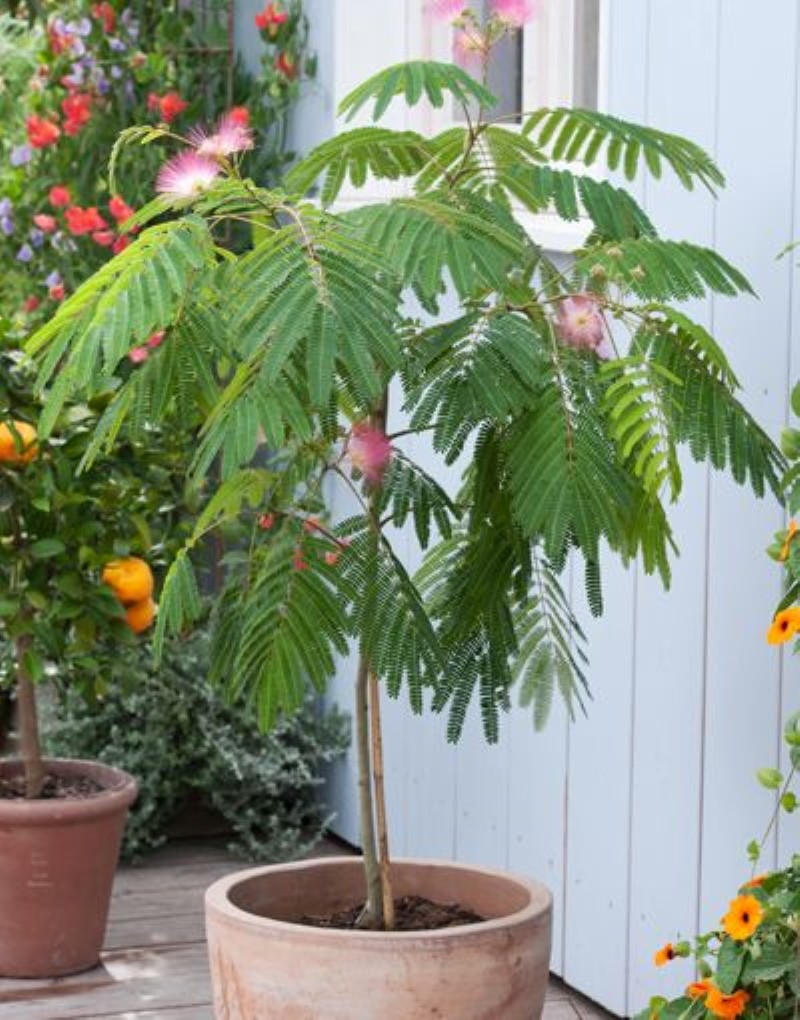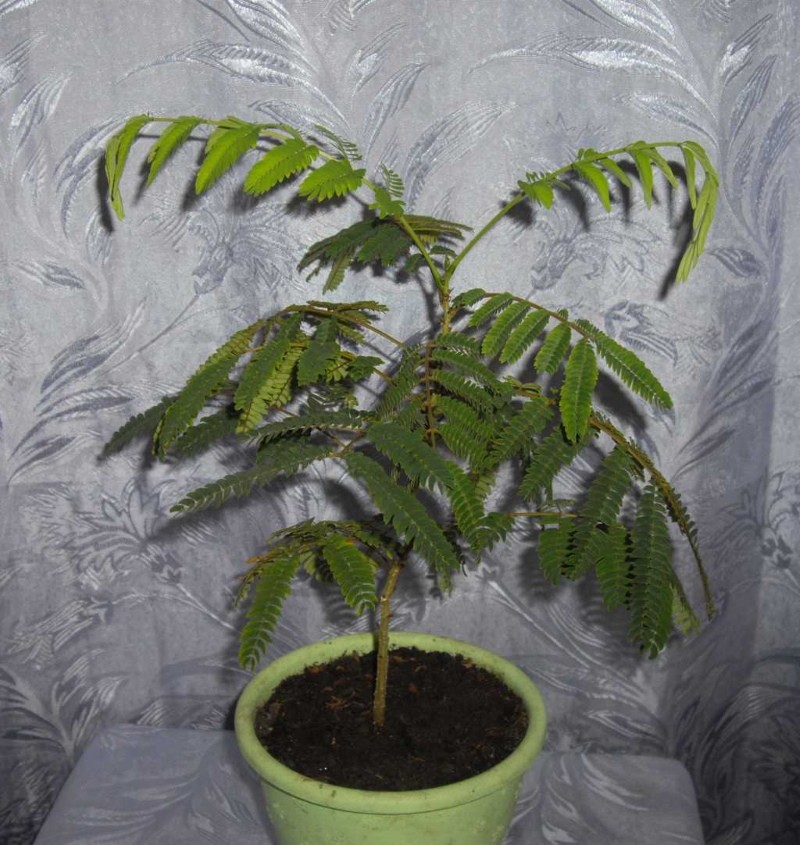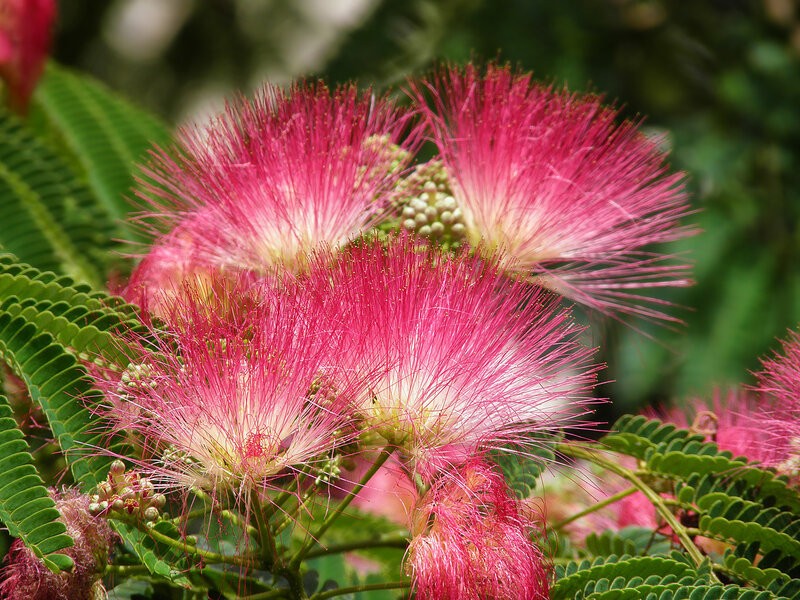What indoor albitsia loves - tropical beauty "silk acacia"

Its carved leaves resemble acacia, but few cultures can compare with such a delicate flowering. The exquisite beauty of room albitsia will delight you with fluffy airy inflorescences with an incredibly fragrant aroma. And although it is considered a rather capricious plant, it is simply necessary to try to plant this miracle of nature. And it will not be difficult for you to fulfill all the whims of albition if you know what she loves and what she is afraid of.
Indoor albicia - conditions for keeping a potted plant

A characteristic feature of albition is the ability of leaves to close along the petioles in the evening.
At home, they grow mainly albition Lankaran, also known as silk acacia. In a pot, it grows to a maximum of 2 m and blooms with beautiful large flowers of pink or reddish color. Albizia is very fond of light, so choose the most illuminated place for her, especially in winter. But so that in the summer the scorching rays of the sun do not fall on the delicate leaves.
Silk acacia is not demanding of air humidity and tolerates dry air well. He prefers moderate temperatures, but in the summer it is better to take the pot out into the garden. In winter, albicia begins a period of rest, which she must spend in a cool place. Do not forget to take it indoors, but place it in a room where the temperature is not higher than 10 ° С, but not lower than 5 ° С warm.
How to care for room albicia
 If you provide comfortable living conditions for silk acacia, it will not be very difficult to care for it:
If you provide comfortable living conditions for silk acacia, it will not be very difficult to care for it:
- During the period of active growth, from spring to late summer, water abundantly after the topsoil in the pot dries out. Take water only at room temperature. During the dormant period, the plant does not need such an amount of moisture, so watering should be reduced to a minimum.
- Twice a month, from March to September, add top dressing. Mineral complexes are suitable for decorative deciduous indoor plants.
- Transplant young bushes every spring into a larger and higher flowerpot. For adults of albition, a transplant is enough every 3 years. Or renewal of the topsoil, if the bush is very large.
Albition propagates by seeds and cuttings. Seeds take a long time to sprout, and for this they need a greenhouse. It is easier and faster to grow a new bush from cuttings. In June, cut a semi-lignified stalk from a young growth and root it in a loose substrate.